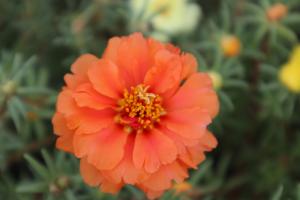How to Protect Potted Plants from Sun
Potted plants are an excellent way to bring greenery into your home or add a touch of nature to your outdoor space. However, too much sun can be detrimental to these plants, leading to wilted leaves, burnt foliage, and stunted growth. Here are some tips on how you can protect your potted plants from the sun:
1. Choose the Right Location
The first step in protecting your potted plants from the sun is to choose the right location. If you are keeping your plants indoors, place them near a window that gets bright but indirect sunlight. Direct sunlight can be too strong for most indoor plants and can result in burnt leaves.
If you are keeping your plants outside, make sure to choose a location that gets partial shade during the day. You can also use a shade cloth or umbrella to provide additional shade if needed.
2. Use a Pot with Drainage Holes
A pot with drainage holes is essential for potted plants as it allows excess water to drain out. If your pot does not have drainage holes, stagnant water can accumulate at the bottom, leading to root rot or fungal growth. When exposed to the sun, the stagnant water can also heat up, scorching the roots and damaging the plant.
3. Water Your Plants Adequately
Proper watering is essential to keep your potted plants healthy and protected from the sun. Water your plants deeply but ensure that the excess water drains out of the pot. If the soil stays too wet, it can lead to root rot, which can damage the plant's ability to absorb nutrients.
During hot weather, plants may require more water than usual. Check the soil regularly to determine how often you need to water your plants. You can also consider using a moisture meter to check the moisture level of the soil.
4. Apply Mulch to the Soil
Mulch helps to keep the soil moist by reducing water evaporation from the surface. It also helps to regulate the temperature of the soil, keeping it cool and protecting the roots from the heat. You can use materials such as shredded bark, compost, or straw as mulch. Apply a layer of mulch around the base of the plant, taking care not to cover the stem.
5. Use Shade Cloth or Umbrellas
If your plants require extra protection from the sun, you can use shade cloth or umbrellas to provide additional shade. Shade cloth is a lightweight material that provides up to 70% shade, making it ideal for plants that need partial shade. You can also use umbrellas to provide shade, especially for smaller potted plants.
Conclusion
Protecting potted plants from the sun is essential to ensure healthy and vibrant growth. By following these tips, you can provide your plants with the protection they need to thrive. Remember to choose the right location, use a pot with drainage holes, water your plants adequately, apply mulch to the soil, and use shade cloth or umbrellas for extra protection.

 how many times do yo...
how many times do yo... how many planted tre...
how many planted tre... how many pine trees ...
how many pine trees ... how many pecan trees...
how many pecan trees... how many plants comp...
how many plants comp... how many plants can ...
how many plants can ... how many plants and ...
how many plants and ... how many pepper plan...
how many pepper plan...































